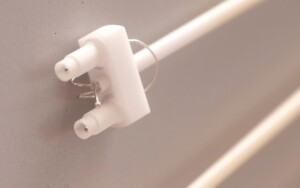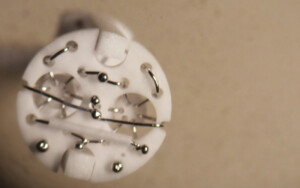An overview of Differential Thermal Analysis
This technique measures the temperatures of transformation of materials. It is particularly used to characterize the phase changes of inorganic materials at very high temperatures. It is often referred to as DTA.

DTA – Introduction to Differential Thermal Analysis
Differential thermal analysis is a technique based on the measurement of a temperature difference between a sample of material to be characterized and an inert reference. During this measurement, both are exposed to the same heating or cooling program.
The device that allows this measurement is called differential thermal analyzer and is mainly composed of :
- A sensor to carry the sample to be measured as well as the reference material. This sensor incorporates a system, usually a differential thermocouple, which continuously measures their temperature difference.
- An oven, in which the sensor, the sample and its reference are placed during the experiment. This oven is equipped with a temperature control system that enables heating and cooling according to a user programmed profile.
- A gas management system for controlling the composition and the regeneration of the atmosphere around the sample. In most cases, the gas is chosen to generate an inert atmosphere, but a reactive atmosphere can also be used to analyze a specific reaction of the sample.
Differential thermal analyzers are mainly used in a research or materials development context.
However, the technique can be combined with thermogravimetric analysis in simultaneous thermal analyzers that also find applications in a quality control or teaching context.
DTA and temperature measurements
When the sample heated in the DTA device is transforming, its temperature difference with the inert reference increases. It then returns to a base value after the end of the transformation. Thus, the analysis of a curve representing the temperature difference as a function of time can help characterizing this transformation.
The analysis allows, according to the case, to determine the temperatures of melting, crystallization, or phase change (solid-solid transformations) of materials.
A series of measurements on samples with different compositions provides data for the construction of phase diagrams, and their specific points such as eutectics. These tools are essential to control the behavior of a material in its final application, especially when it must be exposed to a thermal treatment during its manufacture or its use.

DTA and qualification of thermal effects
Depending on the sample transformation, the temperature difference between the sample and its reference can be:
- Negative in the case of a melting or a transition to a less stable phase
- Positive in the case of a crystallization or a transition to a more stable phase
This provides information on the nature of the thermal effect detected. We can thus distinguish on the temperature difference curve the endothermic effects (which absorb heat: melting, transition to a less stable phase) from the exothermic effects (which release heat: crystallization, transition to a more stable phase).
From this point of view, DTA is surpassed by calorimetry or DSC, which give more quantitative information on the heat exchanged. However, DTA remains very important, and is generally used over very high temperature ranges, which are not accessible to the sensor technologies employed by DSC or calorimetry.
